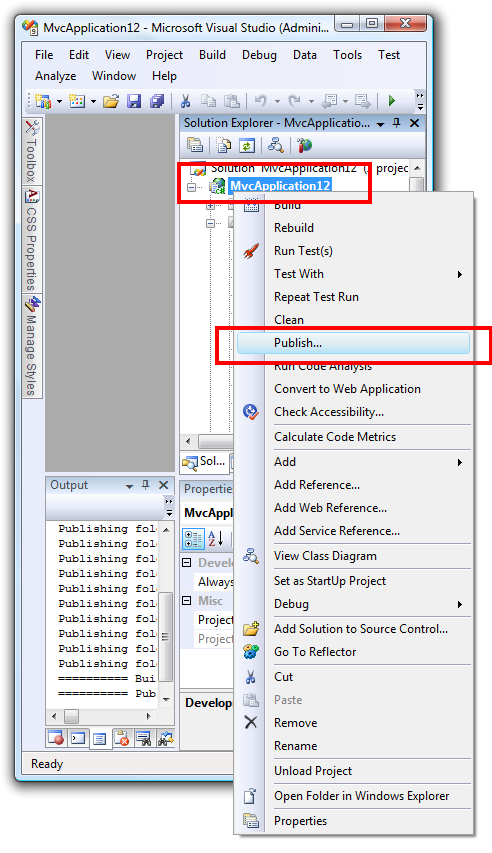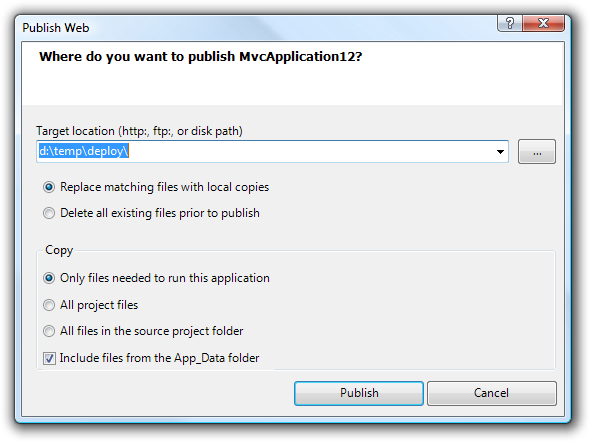Bin Deploying ASP.NET MVC
With the release of ASP.NET MVC Beta, the assemblies distributed with ASP.NET MVC are automatically installed into the GAC.
- System.Web.Mvc
- System.Web.Routing
- System.Web.Abstractions
While developing an application locally, this isn’t a problem. But when you are ready to deploy your application to a hosting provider, this might well be a problem if the hoster does not have the ASP.NET MVC assemblies installed in the GAC.
Fortunately, ASP.NET MVC is still bin-deployable. If your hosting provider has ASP.NET 3.5 SP1 installed, then you’ll only need to include the MVC DLL. If your hosting provider is still on ASP.NET 3.5, then you’ll need to deploy all three. It turns out that it’s really easy to do so.
Also, ASP.NET MVC runs in Medium Trust, so it should work with most hosting providers’ Medium Trust policies. It’s always possible that a hosting provider customizes their Medium Trust policy to be draconian.
What I like to do is use the Publish feature of Visual Studio to publish to a local directory and then upload the files to my hosting provider. If your hosting provider supports FTP, you can often skip this intermediate step and publish directly to the FTP site.
The first thing I do in preparation is to go to my MVC web application project and expand the References node in the project tree. Select the aforementioned three assemblies and in the Properties dialog, set Copy Local to True.

Now just right click on your application and select Publish.

This brings up the following Publish wizard.

Notice that in this example, I selected a local directory. When I hit Publish, all the files needed to deploy my app are available in the directory I chose, including the assemblies that were in the GAC.

Now I am ready to XCOPY the application to my host, but before I do that, I really should test the application as a bin deployed app to be on the safe side.
Ideally, I would deploy this to some staging server, or a virtual machine that does not have ASP.NET MVC installed. Otherwise, I’m forced to uninstall ASP.NET MVC on the current machine and then test the application.
You might be wondering, as I did, why I can’t just use gacutil to
temporarily unregister the assembly, test the app, then use it again to
register the assembly. Because it was installed using an MSI, Windows
won’t let you unregister it. Here’s a command prompt window that shows
what I got when I tried.

Notice that it says that “assembly is required by one or more applications”. In general, there shouldn’t be any difference between running your application with MVC gac’d and it ungac’d. But I wouldn’t trust me saying this, I’d test it out to be sure.
Comments
48 responses